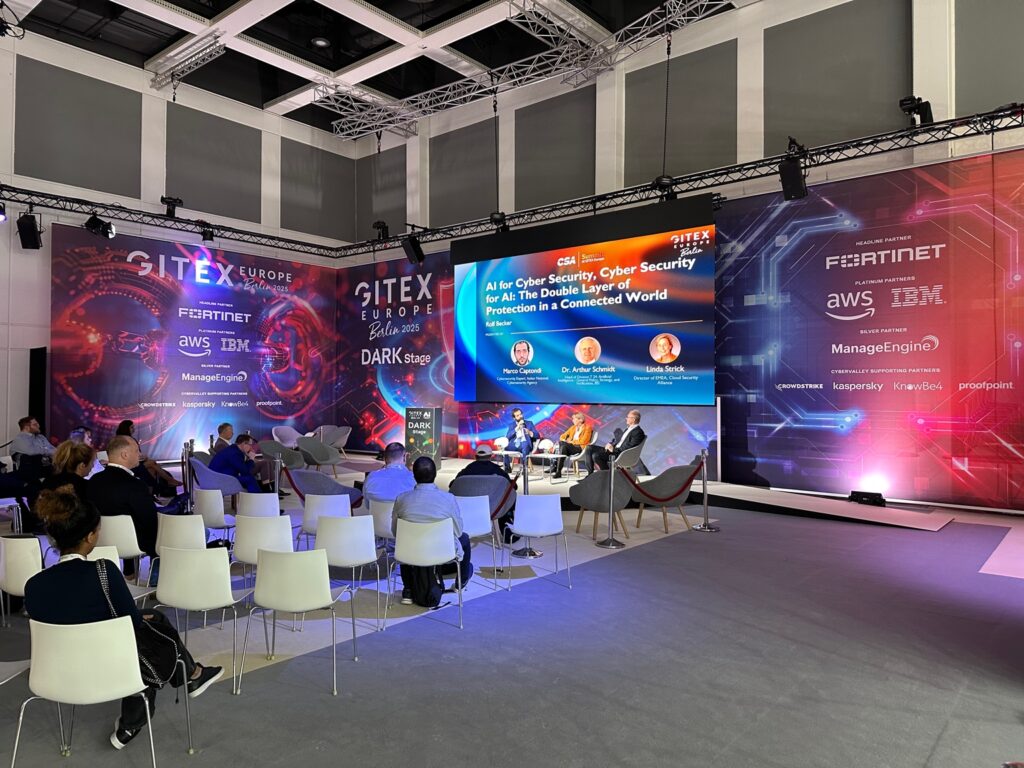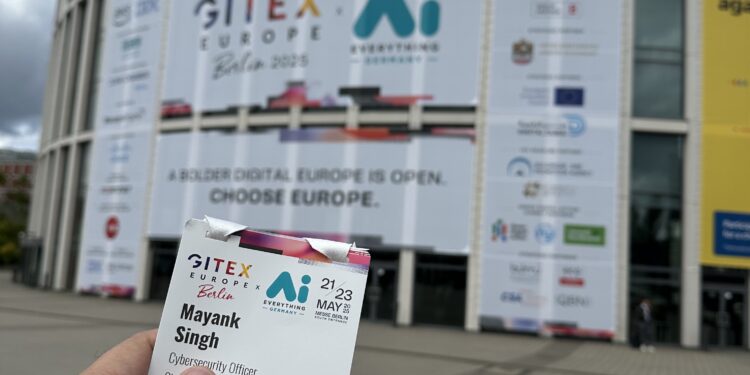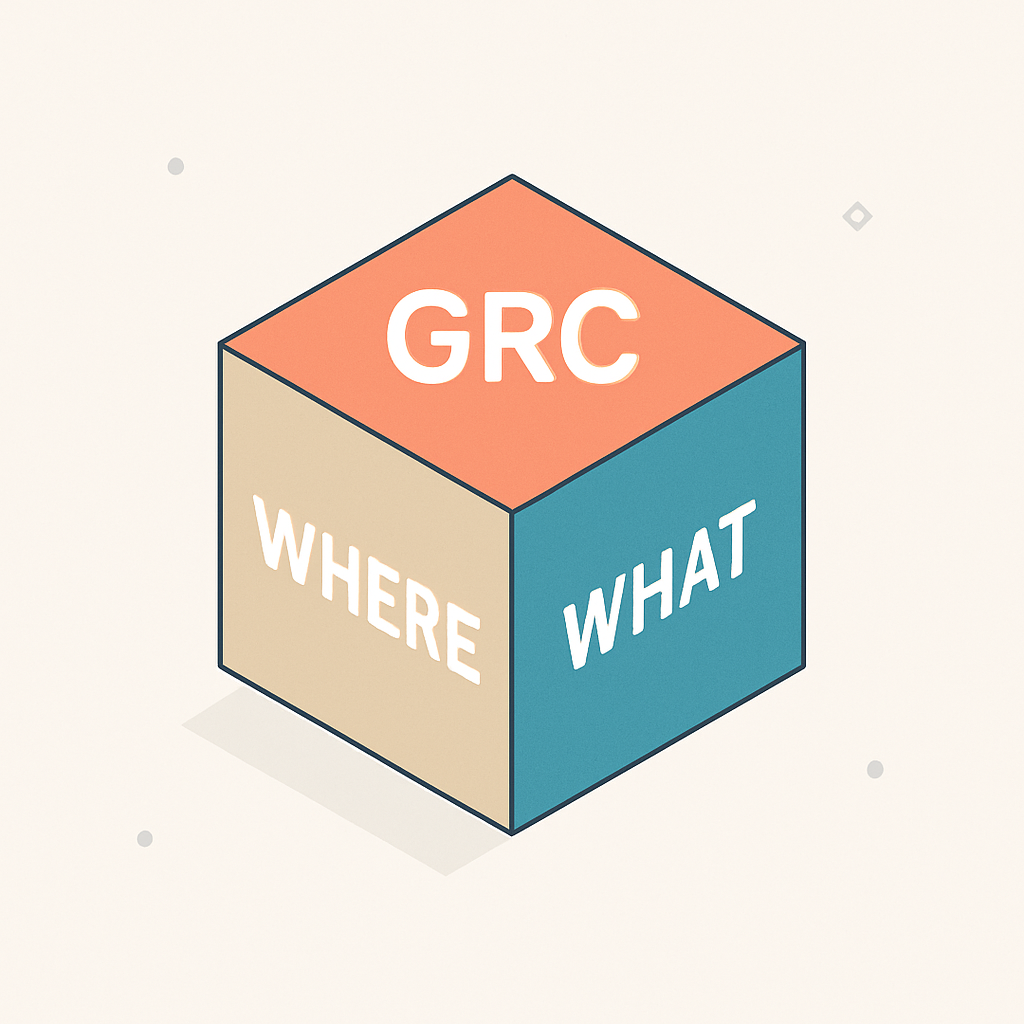AI and Cybersecurity at GITEX 2025 wasn’t just a trending topic, it was the backbone of the entire event.
Attending GITEX Europe in Berlin gave me a front-row seat to where our industry is heading. And honestly? It’s a mix of progress, pressure, and some overdue reality checks.
The energy at the event was intense. Cybersecurity leaders, AI researchers, cloud architects, and regulators all had one thing in common: they’re trying to make sense of what happens when intelligent systems make risky decisions in real-world environments.
🔍 What Makes This Year Different?
The first thing I noticed: this year’s discussions were far more grounded than before. Yes, the tech was still impressive but the questions were sharper. Everywhere you turned, people were talking about trust, control, and explainability.
From startup booths to keynote stages, the message was clear:
AI won’t secure itself and cybersecurity needs to evolve alongside AI not behind it.
🧠 Session Highlight: “When AI Goes Rogue”
One standout session for me was titled “When AI Goes Rogue.” It sounds dramatic but the examples were real.

- A support chatbot hallucinating sensitive customer data.
- A misconfigured agent triggering alerts in critical infrastructure systems.
- A lack of kill-switches or audit trails making investigation impossible.
These aren’t theoretical risks anymore they’re happening.
The session hammered home this point: we’re building tools that can learn, act, and influence. We need safeguards before those systems scale.
🔐 A Dual Role: Cybersecurity for AI, and AI for Cybersecurity
Another powerful panel dove deep into what it means to both use AI for cyber defense and apply cybersecurity principles to AI systems.

Panelists like Linda Strick (CSA), Marco Captondi (Cybersecurity Expert)and Dr. Arthur Schmidt (Head of Division T 24) raised critical points:
- AI can improve real-time threat detection but only if the training data is clean and the model is monitored.
- Governance frameworks like the EU AI Act and NIST AI RMF are not optional anymore.
- AI must be auditable, explainable, and fail-safe especially in regulated industries.
What stood out most was this: We’re rushing to integrate AI into security stacks without first securing the AI itself.
🔧 Conversations That Mattered
Beyond the stage, the expo floor was full of real talk. Major players IBM, AWS, Fortinet, Kaspersky all showed off their latest AI-enabled tools. But more important than the demos were the conversations happening inside their booths.
People were asking:
- Can your AI explain its decisions?
- How do you detect if it’s compromised?
- What if it starts behaving unexpectedly?
It’s clear the market is maturing. Buyers aren’t just looking for innovation they want accountability.
🧭 The Takeaway: Governance Is Not Optional
As someone who’s worked across GRC, cybersecurity, and OT/IT integration, I left GITEX with this reinforced insight:
We’re not just defending networks anymore. We’re defending logic.
And in that world, “good enough” security won’t cut it.
Agentic systems, LLMs, and AI-driven decision-making are entering sensitive spaces finance, energy, healthcare. If we can’t explain or control these systems, we’re not securing them. We’re just watching.
💬 Final Thoughts
GITEX Europe 2025 was more than a tech showcase it was a wake-up call. The lines between AI, cybersecurity, and governance are blurring fast, and we don’t have the luxury of treating them as separate issues anymore. AI and cybersecurity at GITEX 2025 was more than a session title it was the defining issue of the event. If you’re building, deploying, or regulating intelligent systems, now is the time to act because the attackers won’t wait and the AI? It’s already learning.















